Imagination: For God’s Glory and Others’ Good, Part 3
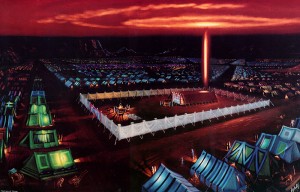
The Tabernacle: planned by God, yet made with designs crafted with human imagination.
For a series about how imagination and fiction, like marriage and sex, are good things that Christians should not reject, I’ve actually started with blowing up many of my own fictions.
In part 1, I had to recall, even after posting the first version of the column, that merely giving a person “permission” to enjoy his God-given imagination would not help if that person is determined to abuse anything, truth or fiction alike, for his own pleasure and sinful desires.
And in part 2 came a recounting of a revelation: that “fiction is evil” notion is not a relic from certain rural-oriented sectors of Christianity. Even if it’s rare, it’s still around.
So those are the fictions, about fiction. But now come the best parts: how does Scripture not only say nothing against imagination and storytelling, but in fact actually support these as methods to glorify the God we love, by retelling old truths about Him and us in new ways?
I love stories. The more realistic and fantastic, the better. And I’m not sure what came first: my love for Story or my love for Scripture. Now I find it hard to separate those two, because the Bible lays out the most amazing story of all — the Gospel — upon which all the greatest of human-made stories find their inspiration, regardless of whether their creators know it.
Yet even apart from that metanarrative inspiration, Scripture includes at least three specific real-life figures who glorified God with their imaginations. They were not simply pushed into compromising with The World with their practice of creative arts, at which point we’d guess that God only mildly tolerated what they were doing while secretly wanting them all to go into overseas missionary jobs. Instead, we find that these servants were empowered by God for their tasks, in three genres: architecture and visual arts, scholarship in pagan mythology, and — in the case of Christ Himself — telling old truths in new ways, through His stories.
Bezalel and Oholiab: Israelite ministers of the arts
Everyone knows the Ten Commandments — or used to, anyway. Others may know about the myriads of laws God adds on after Exodus 20: laws about altars, treating your slaves right, making restitution, etc. Then, in Exodus 25, God seems to shift topics abruptly. He turns from Lawmaker to Master Designer. (Insert Relevant remark about remodeling-centric programs on television.) And even while ordering materials for His Tabernacle and being very specific about what His building plans, He’ll later make it clear that humans get to help.
The LORD said to Moses, “Speak to the people of Israel, that they take for me a contribution. From every man whose heart moves him you shall receive the contribution for me. And this is the contribution that you shall receive from them: gold, silver, and bronze, blue and purple and scarlet yarns and fine twined linen, goats’ hair, tanned rams’ skins, goatskins, acacia wood, oil for the lamps, spices for the anointing oil and for the fragrant incense, onyx stones, and stones for setting, for the ephod and for the breastpiece. And let them make me a sanctuary, that I may dwell in their midst. Exactly as I show you concerning the pattern of the tabernacle, and of all its furniture, so you shall make it.
— Exodus 25: 1-8
This brings up a few initial questions:
- How did the Israelites get all this stuff? Answer: from Egyptians who were only too glad to see them finally go (Exodus 12: 33-36).
- Did all those generous love offerings include idol statues and “bad” Things?
- If so, what might it show us that God’s Tabernacle for His honor was built from items and materials used by a pagan culture, perhaps even for pagan worship?
“Exactly as I show you concerning the pattern of the tabernacle, and of all its furniture, so you shall make it,” God informs Moses (Exodus 23:9). However, after several more chapters of detailed instructions, the Lord gets to a rather key component: who will supervise all this?
The Lord said to Moses, “See, I have called by name Bezalel the son of Uri, son of Hur, of the tribe of Judah, and I have filled him with the Spirit of God, with ability and intelligence, with knowledge and all craftsmanship, to devise artistic designs, to work in gold, silver, and bronze, in cutting stones for setting, and in carving wood, to work in every craft. And behold, I have appointed with him Oholiab, the son of Ahisamach, of the tribe of Dan. And I have given to all able men ability, that they may make all that I have commanded you: the tent of meeting, and the ark of the testimony, and the mercy seat that is on it, and all the furnishings of the tent, the table and its utensils, and the pure lampstand with all its utensils, and the altar of incense, and the altar of burnt offering with all its utensils, and the basin and its stand, and the finely worked garments, the holy garments for Aaron the priest and the garments of his sons, for their service as priests, and the anointing oil and the fragrant incense for the Holy Place. According to all that I have commanded you, they shall do.”
— Exodus 31: 1-11
Wow. So much is here, even before we find more about Bezalel and Oholiab in later chapters.
- Bezalel was the first man in the Bible described as being filled with the Spirit (31:3).
- These men’s ministries, their giftings, were in “ability, intelligence, knowledge and craftsmanship” (also 31:3).
- God did provide plenty of specific designs for His Tabernacle, and even more clearly based its construction and the motive for building it upon His will, love, and Law. Yet He also asked those two craftsmen and others to use their own skill and designs, which He had given them, “to devise artistic designs, to work in gold, silver, and bronze, in cutting stones for setting, and in carving wood, to work in every craft” (verses 4 to 5). Bezalel, Oholiab, and every other craftsman called to this task, had freedom to “devise artistic designs,” not specifically prescribed by God, yet to honor Him just as they honored Him through building what He had specifically planned.
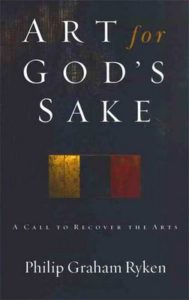 For more, I highly recommend Phillip Graham Ryken’s short but readable book overviewing how art is supported in Scripture: Art for God’s Sake. He covers these chapters in Exodus about the Tabernacle’s artistry very well, and for those who see the connections between the Covenant then and how it carries over to now (which I’m still working to understand), it’s so encouraging to God-glorifying imaginers today that they, too, can find Biblical heroes.
For more, I highly recommend Phillip Graham Ryken’s short but readable book overviewing how art is supported in Scripture: Art for God’s Sake. He covers these chapters in Exodus about the Tabernacle’s artistry very well, and for those who see the connections between the Covenant then and how it carries over to now (which I’m still working to understand), it’s so encouraging to God-glorifying imaginers today that they, too, can find Biblical heroes.
Whew. Out of room already? I had thought I’d be done today! Next: more on Daniel. Then even better: Christ Himself, the ultimate Storyteller, who shared old truths in new ways.
































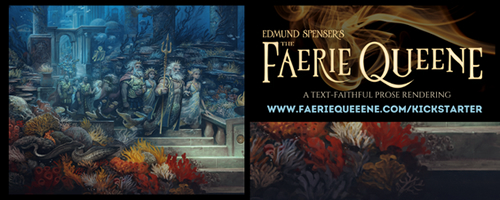



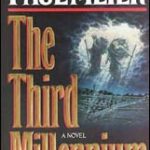

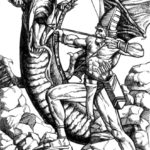



I didn’t even know about those two men until I read a Gilbert Morris book–can’t remember the title, but it was in his Shilioh series about the linage of Christ. And when I was little, I used to love reading about the Tabernacle. No clue why. Just about all those materials, I guess…
Thanks! I just posted about Christians and reading fiction with magical, or pagan, elements, referring to your parts 2 and 3. See here, if interested.
Thanks for the encouragement and further thoughts, Martin! I’m heading over there to read it now — after fixing the link, by the way, to display better. (With the new comment-editor one can link other sources faster, though you can also click the little HTML button, second from right, above the comment-composition field to do direct editing of the source code.)
I’ve thought about the interaction between God and the two tabernacle designers, too, Stephen. It’s one of the reasons I don’t think that art is without function as so many believe (art for art’s sake). It’s also why I don’t believe “anything goes” when it comes to art. Anything goes within the parameters God sets.
All good thoughts. Thanks for this Biblical look at art. (BTW, is there anything you can do about the extra space that hitting “return” generates?)
Becky
>>>It’s one of the reasons I don’t think that art is without function as so many believe (art for art’s sake).
For me, this goes right back to sunsets. If God does art simply because beauty pleases, should we not?
(Note: not trying to draw a human – God equivalency here, just to point out that God loves playing with colors, and clay, and genes, for seemingly no reason other than to make beautiful things.)
😀 I suggest His reason is the same as we’re proving by virtue of even talking about it: that He wants to make Himself look great to us. As the most important Being in the universe, and the most loving, it only makes sense that giving Himself to us is the most loving thing He could ever do. Methinks the Psalms confirm this purpose of natural beauty as well.
[…] this series I’ve explored only a few people, Bezalel (and Oholiab), who used their gifts to honor God with His people; and Daniel, whom God gifted to stay holy and yet also be a light for Him in an […]